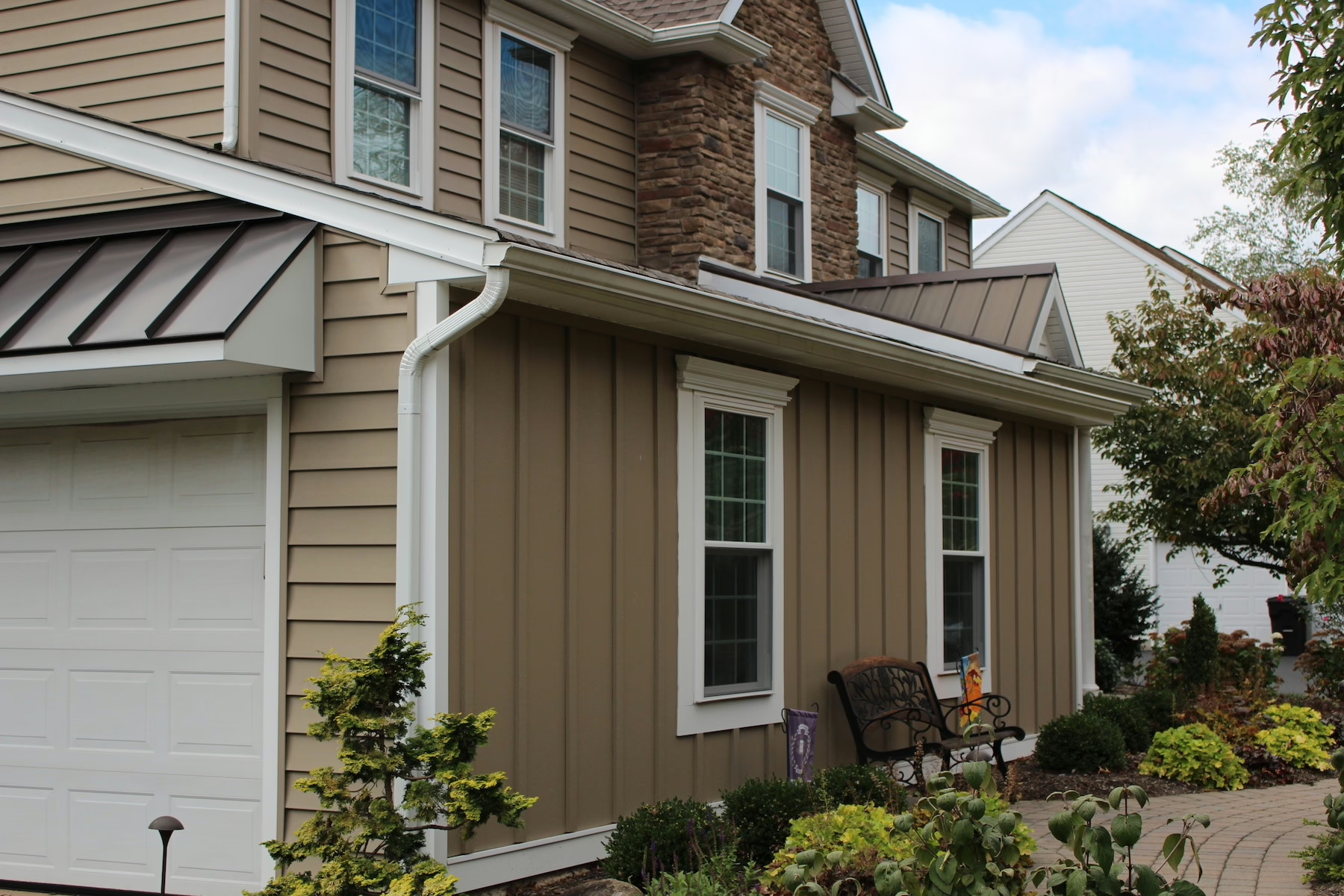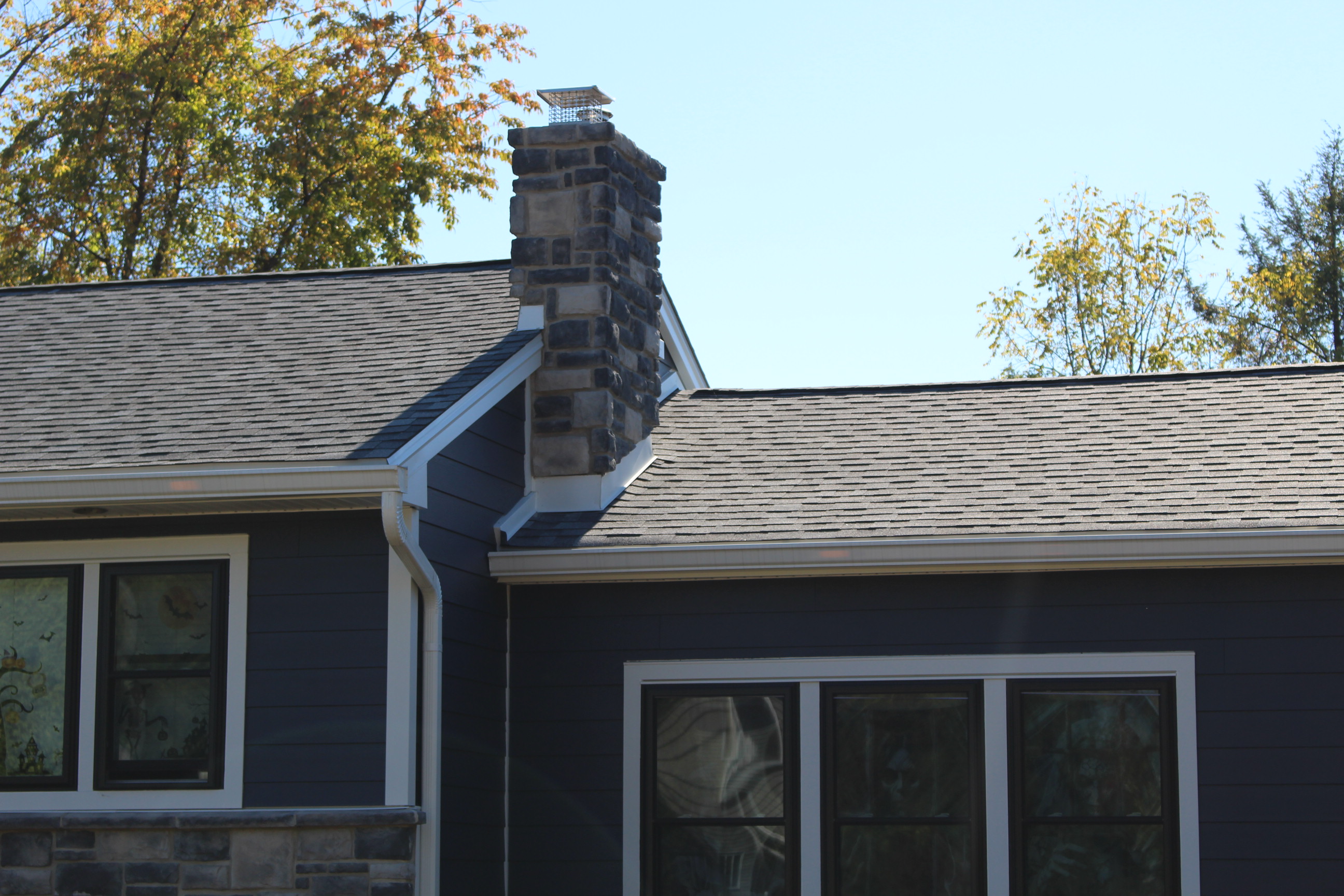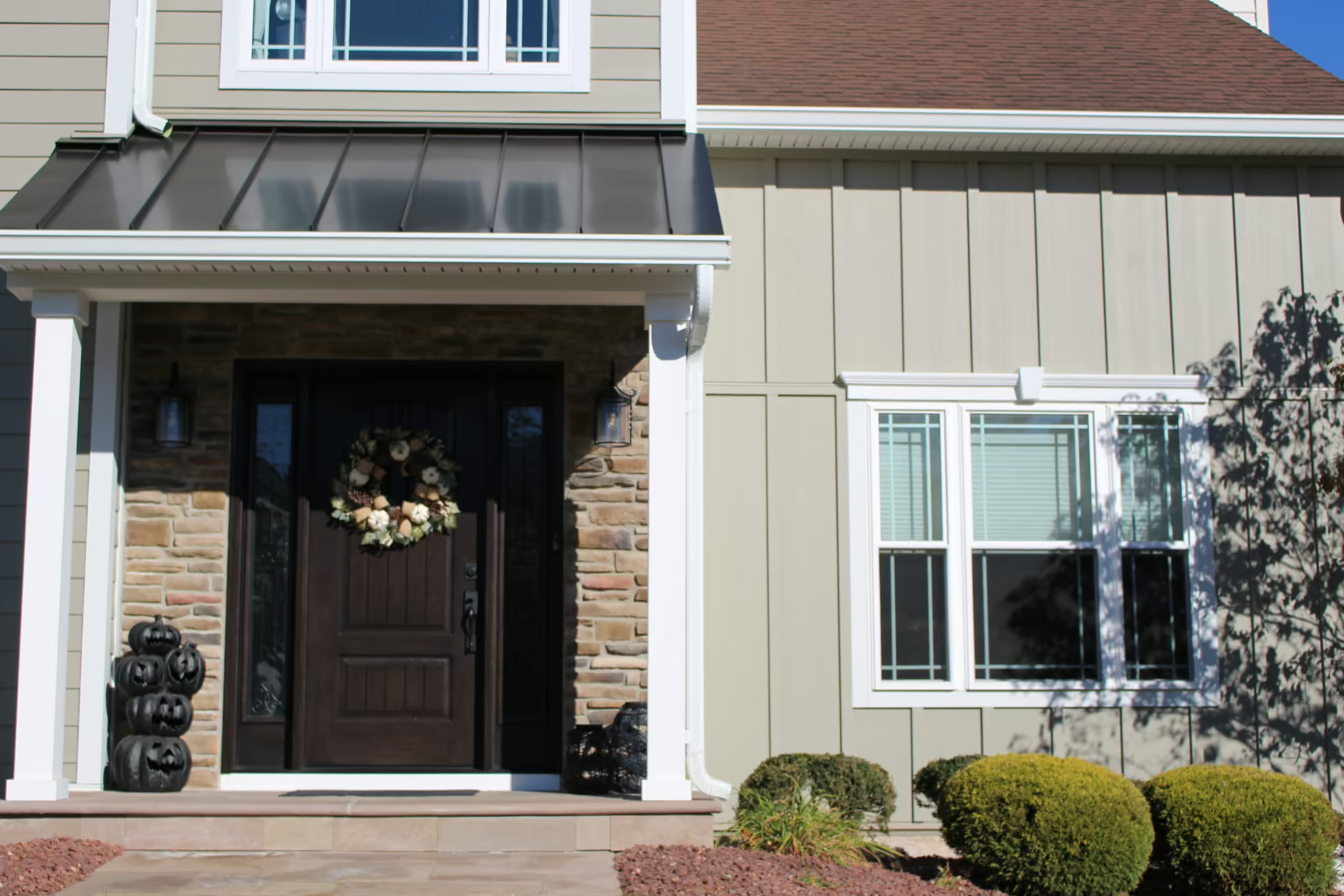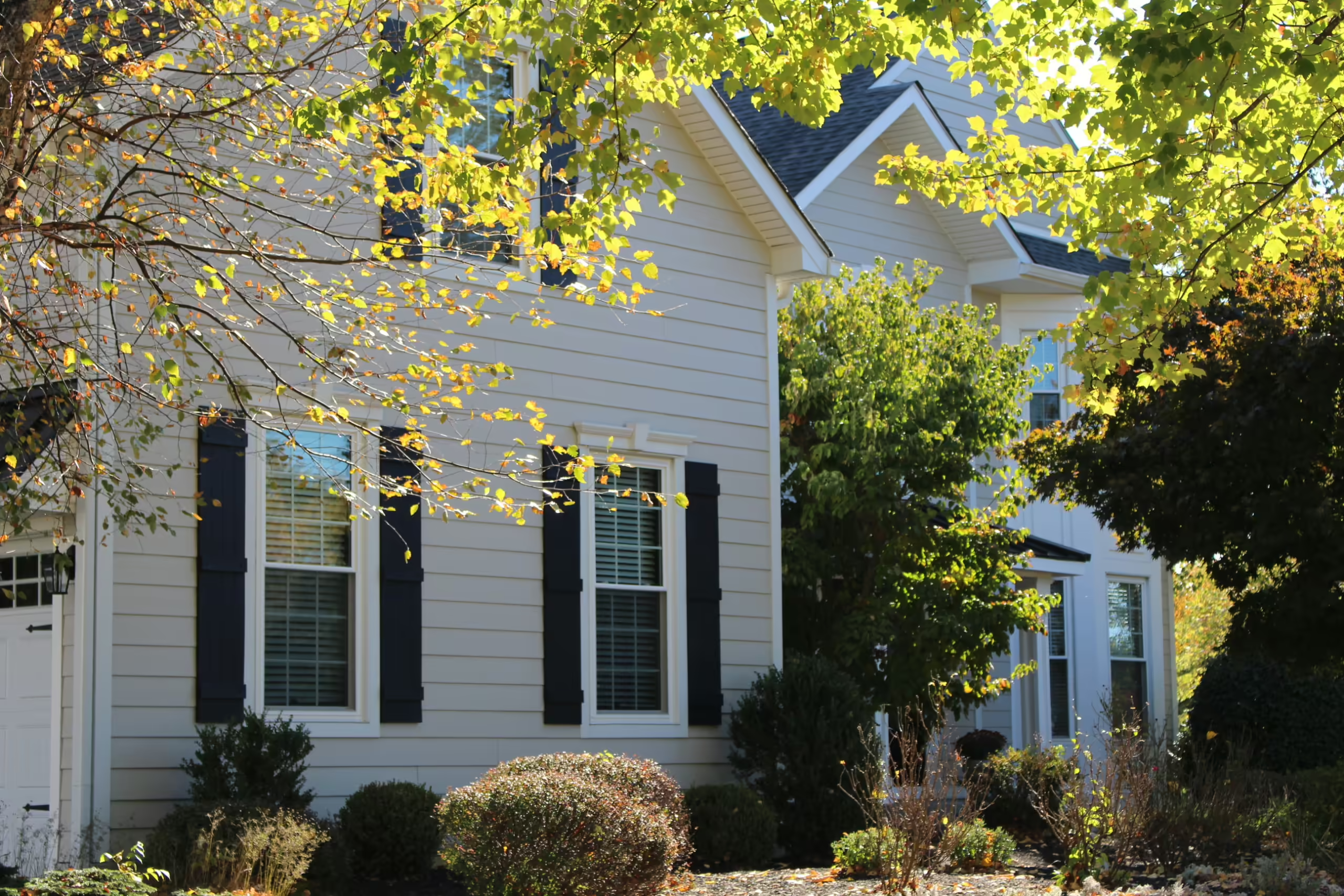The right siding color can amplify your curb appeal and accent your home’s best features. And selecting the best color combination doesn’t have to be stressful.
Yes, your siding color covers the bulk of your exterior, and the wrong color would literally be an eyesore—but armed with the simple principles that follow, you can choose a winning color you’ll love coming home to each day!
Factors that Influence Your Choice in Siding Color
1. Consider your home’s style
Different home styles require different color palettes. Craftsman homes look best in earth tones like olive, tans, and browns—while stately Colonial homes look best in white or cream. Victorian houses work well with playful pastels, and Ranch homes allow for a wide range of options like soft sage, blues, neutrals, and classic browns.
2. Take a look at the surrounding fixed elements
Your roof’s color and style is a fixed element that likely won’t change any time soon. Make sure you select a siding color that complements it well. Dark roofing shingles call for lighter siding colors like white or a soft neutral. The contrast pleases the eye and offers timeless beauty you’ll enjoy.
Other fixed elements include your brick or stone siding. Be sure your siding color selection pairs well with these “unchangeable” elements that surround your siding color.
3. Factor in the landscaping that borders your home’s perimeter
Trees and shrubs around your house create a colorful, textured backdrop for your home and should be part of what you consider as you select a new siding color. Vibrant green trees pair well with light browns.
4. Take into account your home’s size
If your home is sizable—light, neutral colors will emphasize its attractiveness and complement it well. In contrast, bold, dark colors make large houses look gloomy rather than welcoming.
If your house is modest in size—bold colors can amp up its personality and highlight its looks. Light colors may cause it to blend into the background and not stand out.
5. Note the region of the country you live in
Bright, coastal colors accent beach homes, but probably won’t work well on your Pennsylvania house. So as much as you love vacationing, you’ll need to leave those shades for beach towns. Stately, timeless shades like white, beige, grays and reds work well on homes in this area of the country.
6. Ponder the color of neighboring homes
As you “shop for siding colors,” be sure to take a stroll or casual drive around your neighborhood. Notice the siding colors that trend in your area. Which ones stand out to you? Are there some contrasting color schemes used on trim and doors that you love? What does your homeowners association require when it comes to boundaries on colors? Are there colors that complement the homes that surround yours well? You wouldn’t want a color that clashes with your immediate neighbors or neighborhood.
7. Decide what you really love
While there are principles to consider when choosing an exterior color, your home is uniquely yours and should reflect your taste and preferences. So, what do you love?
Highlighting (or Concealing) Exterior Features of Your Home with Color
Emphasizing Features
If you want to highlight elements of your exterior, select a siding color that makes that feature stand out. If you love the trim work on your home that surrounds your windows and doors, paint it white, and pair it with a dark siding color. The contrast will highlight your gorgeous trim and add visual appeal.
Minimizing Features
If you want to draw attention away from features you don’t want to emphasize, select a neutral siding color that closely matches the part of your exterior you want to minimize. For example, if you don’t want to highlight your trim, choose a color in the same color family as your siding, but very close to it so there is minimal emphasis on your trim. Additionally, you can opt to paint siding and trim the same color so they blend rather than contrast.
How Color Impacts Energy Efficiency
If you’re taking energy into account when you choose your siding (and roofing!) color, consider lighter hues rather than darker ones. Light colored siding lowers your energy usage and resists UV fading, keeping your home’s exterior looking fabulous longer.
Colors That Are Trending
Off-white/cream has made a comeback and is expected to be the most popular home exterior color in 2024. This timeless neutral delivers the perfect blend of elegance, versatility, and modern appeal that complements a variety of architectural styles, making it the number one choice for 2024.
Various shades of blue are trending currently as popular home exterior colors. Their calming effect is a welcome relief to all that is going on in the world.
White never goes out of style. Its classic appeal delivers timeless warmth that welcomes you home each day. Pair it with black shutters and trim, and a crisp red front door for genuine beauty you’ll never get tired of.
Gray is an alternative neutral to white and cream, and the darker gray you choose, the bolder the statement. Grays blend well with a variety of neighborhoods and work excellently in our area. They pair perfectly with crisp white for a clean, yet welcoming contrast.
Muted and deep greens are swelling in popularity and work perfectly in both rural and urban areas.
Reds and browns are warm and used frequently in rural areas, lake communities, and cottages—yet work fabulously on other home styles too!
Get the Perfect Color Siding for Your Home Exterior
Now that you know the basics you can move forward with confidence. Take a look at some recent featured projects our expert team at Preferred Home Improvement completed in Bucks, Chester, Montgomery, and Delaware county—and get inspired to address the areas of your home’s exterior that need an upgrade or new color.



